MY PURPLE DRESS SET
I recently made a set of dresses for a pair of
5-yr old twins. The grand mother (and
mother) were very sure about one thing – no similar dresses or colours. They did not like dressing the twins in the
‘same’ type of clothes .. which suits me fine as I love making exclusive and
individual clothing for people.
However, when the girls were presented their clothes, they decided they
both wanted the purple coloured dress !
So here I am.. designing a new dress
for one of the twins.. the only requirement being it is purple.. This is the
kind of love I get.. isn’t it awesome? Total freedom and confidence in my work! So join me as I make a new purple dress, with a lovely matching belt and headband.
Thank you for joining me.
In case you have just joined me, know that you can access all of my earlier creations by checking under ‘categories’ on the right hand side of this blog under “Labels”. Then, for your convenience, follow me here or on Facebook, You Tube, Pinterest, Twitter or Instagram.
Check out all my social media handles at the bottom of this blog
Oh, and may I add that the fastest way to find any of my blogs is via Pinterest.
All my blogs can be printed. Find the printer friendly (green) link on the right side of this blog. You can also hit Control P (or Command P for Mac) on your keyboard, and the blog will go directly to the connected printer.
Remember that you only print if absolutely essential. Save paper – Save Our Earth.
Do remember to add my blog URL when you make and show off your creation.
Just copy the link on the search bar above - that's the blog URL.
To purchase this or similar yarn online, click the highlighted links below to buy your yarns online via Amazon. While you will still pay the same, I may get paid by Amazon as well.
This is a free blog - so do pay it forward for me. Cheers.
Thanks for joining me once again as we work on and discover this new pattern together.
General yarn info : The yarn used today is not specific to this pattern.
You can use any yarn with a suitable hook to make this project to any size.
International yarns : Among the international yarns I have used in this thickness, I’d suggest Aunt Lydia Cotton 10, Aunt Lydia Bamboo-Viscose 10, DMC Petra, Sullivans knitting cotton (Australia), Milford Soft, Hilaza Rustica Eclat , Alize cotton yarn and Alize bamboo yarn , Lily Sugar n' Cream cotton yarn, Caron Simply Soft , Bernat Softee chunky.
Size made : For
a 5 yr old
You can make this to any size. Size only given for yarn estimation.
Difficulty level
: Intermediate Skill level
Abbreviations used : (Using U.S terminology)
lp(s) : Loop(s) hk : Hook
dc : Double crochet sp : Space
sl-st : Slip stitch ch : Chain
st(s) : Stitch(es)
yo : Yarn Over
Single Crochet : Sc : yo, insert hk into st ; yo (2 lps on hk); yo, draw through both lps. One sc made. Check out the video at
https://youtu.be/ghACqBpA-3k
Double Crochet : dc : yo, insert hk into st ; yo (3 lps on hk);
[yo, draw through 2 lps] twice. One dc made.
Chainless start for Double Crochet : I dislike the ch-2 / ch – 3 start, and this is what I do to start my row of dc.
Here is a sizing chart for general neck sizing
Here is a sizing chart for general body sizing
Instructions using U.S terminology
Please note that I start all my rows with a ch 1, turning chain for ease.
Please check the top of this blog for easy video tutorials on all stitches used in today's pattern. For your convenience there video tutorials through the blog too
Please read through all my notes before you pick up your hook, so you know just where we're heading in our pattern.
In my patterns I work with the principle of stitch count and body measurement.
This means that you need to work the stitch count in pattern, till you get the measurement (length and/or width) that you need for your project.
I do not claim this to be my pattern , but here are my pattern notes as I make my own original project I’ve followed a rough pattern of sorts and it is not in English – so here is what I’ve done with this.


So before we set off on our new creative
journey, let’s take a quick look at what we’re creating here today.
We start with the yoke, working from the waist
up.
Now it’s up to you to decide *where*
your *waist* is – by that I mean that you can have it just under the armholes,
or you could go way lower to the waist.
Whatever you decide, remember that you will work
half that round measure (so either half round chest or half round
waist).
Also remember that you need to ensure that you
need to work with the largest of these measures (i.e if you want your
yoke starting at waist, but the chest measure is larger, then that’s you will
use half the chest measure)
So you can work this pattern to fit a child of any
size. All you need to remember is to
check the link for the size needed for your child’s yoke, and then get the
stitch count right for the skirt , making it as long and frilly as you desire.
Ta da!
For the front of the yoke, we will work from
side to side, armhole to armhole.
For the back, you need a opening for a set of
buttons, so as you reach the shoulders, you will divide for the button hole
opening and work back and forth.
Now there is a link for a set of charts
depending on age of child and I’d suggest we use that as a reference.
Part 1 : Yoke
For our yoke, you can work all sc / all hdc / or
all dc all the way from one side to the other, or you can do this little “V”-st
which is a small pattern of sorts.
We have a “V”-st for the yoke, which is (dc ; ch
1, dc) all in the same st or ch-sp.
We are working from the waist / chest up to the
shoulders.
So here are two ways you can work the yoke.
1. You
start with fsc and work in plain sc / hdc / e-sc or dc all the way from the
waist up to the chest calculating number of stitches you’ll need for half the
round waist measurement
2. You
start with fsc in multiples of 3 - if you are using the “V”-st pattern for the
yoke calculating number of stitches you’ll need for half the round waist
measurement.
Now that you have figured out which measurement
you are using, let’s hook on.
You need also to decide how long you want your
back (placket) opening for the buttons.
Start Row 1 :
with as many fsc (in multiples of 3 if you are going to use the “V”-st) as
needed for the half round waist measurement.
Row 1 : dc in 1st
sc ; sk next 2 sc, “V”-st in the next sc ;
*sk next 2 sc, “V”-st in the next sc* ;
rep *to* till the last 2 sc ;
sk next sc, dc in the last sc. Turn.
Row 2 : dc in 1st
dc ; “V”-st in the next “V”-st ;
and in each “V”-st all the way to the end ;
dc
in the last dc. Turn.
Rep Row 2 till your project reaches the armhole.
Armhole shaping
For our armhole decrease we will work just one
decrease row.
Armhole shaping Row :
sl-st in the 1st dc and the next“V”-sts ;
dc in the ch-1 sp
of the next “V”-st ;
and in each “V”-st all the way to the 2nd last
“V”-st from end ;
dc in the ch-1 sp of that 2nd last “V”-st. Turn.
Rep Row 2 till your project reaches the neckline
level.
For the neckline shaping : figure out how
deep and wide you want your neckline, and then place a marker at the point that
decides the sides of your neckline.
You will work from the armhole till the ch-1 sp
of the marked st ; dc in that marked stitch.
You will once again Rep Row 2 till your project
reaches the shoulder level, working one shoulder at a time.
Fasten off and weave in ends.
Once done, return to the other marker (for the other side of the neckline) and work
a dc in that marked ch-1 sp of that “V”-st.
Once again, Rep Row 2 till your project reaches
the shoulder level.
Fasten off and weave in ends.
You have completed one side of your yoke.
Repeat instructions for the other side (back) of
the yoke.
The only difference is that you will need to work in a small opening for
the back button, and for this, I’d suggest that you keep a small opening just
on the last few rows and at that time you will work back and forth for these
few rows from the centre of your yoke to the armhole end and back till you
reach the shoulder level.
Fasten off and weave in ends.
Join your two yokes at the shoulders and sides.
Check the top of this blog for several 'how to' video links.
For the skirt portion of our dress, we will work
in rounds.
Part 2 : Skirt for your beautiful dress
I suggest you work the skirt portion of our
dress in rounds.
We will be working the
skirt part of our dress from the other side of the fsc.
Before we work out our stitch count, two points
:
1) Ensure that you manage to get the stitch
count by adding stitches if need be ;
2) The more the number of stitches you have (in
multiples, of course), the more the flare / frills on your skirt for this
dress.
Our stitch count for the skirt is in multiples 3
Just to get the number of stitches right, let’s
work our first Start Round with a round of sc all around
Start : sc in 1st
st and in each st all round, ensuring you have multiples of 8.
Join with a sl-st to the 1st st.
For our skirt part, we have a “V”-st again.
Here
our “V”-st is (2 dc ; ch 1, 2 dc) all in the same st or ch-sp.
The last idea before we set off on our pattern
Quick tweak / ideas :
1. To
increase the frilly portion and laciness, you could make your
“V”-st as (3 dc ; ch 2,
3 dc) all in the same st or ch-sp.
2. For
the first few rounds, you could reduce the frilliness by using the
regular “V”-st (2 dc ; ch 1, 2 dc) all in the same st or ch-sp.
Now the beauty of this pattern is the use of
colours and changing every alternate row.
I am going to write the pattern indicating color changes, but you could
well decide to make the whole pattern in one colour as well.
Decide which is your Main colour (MC) and which
is your Contrast colour (CC).
If using two colours, remember to bring your
alternate colour up every row at the end, so that you just have this neat line
right at the back.
Round 1 : (Using MC)
: “V”-st in 1st st ;
*ch 1, sk next 2 sts, “V”-st in the next st ;
ch
1, sk next 2 sts, “V”-st in the next st* ;
rep *to* all around ;
ch 1 and join with a sl-st
to the 1st st.
In the following round, we need to start with a
“V”-st in the very 1st /ch-sp.
Now as this a bit difficult, may I suggest that you split your
“V”-st and then work 2 dc in the ch-sp, follow the pattern and when you come
back around, let’s work the next 2 dc (of our “V”-st) in that same 1st
ch-sp and then join with a ch-1 to the 1st dc.
Right then.. let’s get to it..
Round 2 : (Using CC)
:
2 dc (of our 1st “V”-st) in the 1st ch-1 sp ;
*sk 2 dc (of “V”-st), sc in the next ch-1 sp (of
“V”-st) ;
sk 2 dc (of “V”-st), “V”-st in the next ch-1 sp (between 2 “V”-sts)*
;
rep *to* all around ;
2 dc (of our 1st
“V”-st) in the 1st ch-sp, ch 1 and join with a sl-st to the 1st
st.
Round 3 : (Using MC)
:
sc in the 1st ch-1 sp ;
* sk next 2 dc (of the “V”-st) , “V”-st in the
next sc ;
sk next 2 dc (of the “V”-st) , sc in the next ch-1 sp (of the “V”-st)*
;
rep *to* all around ;
ch 1 and join with a sl-st
to the 1st st.
Rep Rounds 2 & 3 till you have a skirt
length (for your dress) as desired.
Now at the bottom of our dress, there is a
lovely lacy border. IF you decide that
you are working in that border then you will need to first figure out how wide
that border isgoing to be and work that many inches less when rep Rounds
2 & 3.
Part 3 : Border
The stitch count for our border is 12 + 3
Before you start on the 1st round, ensure
that you have multiples needed.
Round 1 : sc in 1st
sc , ch 5, sk next 3 sc, sc in the next sc ;
*ch 5, sk next 3 sc, sc in the next sc* ;
rep *to* all around till the last 3 sc ; ch 2,
dc and join with a sl-st to the 1st sc.
You are now in the centre of that last ch-5 sp.
Round 2 : sc in 1st
ch-5 sp ;
*ch 5, sc in the next ch-5 sp* ;
rep *to* all around and join with a sl-st to the
1st sc.
In the following round, we will be working 6 dc
in some of the ch-5 sps. However, in the
1st ch-5 sp, we will start only with 5 dc and then work that last 6th
dc right at the end. This will be done
for both this round and the following two rounds.
Round 3 : 5 dc in 1st
ch-5 sp ;
*ch 1, sc in the next ch-5 sp ;
(ch 5, sc in the
next ch-5 sp) ;
rep (to) once ; ch 1, 5 dc in the next ch-5 sp*
;
rep *to* all around till the last ch-5 sp ;
ch
1, dc in the same 1st ch-5 sp and join with a sl-st to the 1st
sc.
Round 4 : dc in 1st
dc ;
(ch 1, dc in the next dc) ; rep (to) 3 times ;
*ch 2, sc in the next ch-5 sp ; ch 5, sc in the next ch-5 sp ;
ch 2, dc in the next dc ; rep (to) 5 times* ;
rep *to* all around till the last ch-5 sp ;
sc
in that last ch-5 sp ; ch 2, dc in the 1st ch-5 sp and join
with a sl-st to the 1st dc.
In the following row, we’ll be using the dc
3-tog.
Round 5 : dc 3-tog in
1st dc ;
(ch 3, dc 3-tog in the next dc) ;
rep (to) 3
times ;
*ch 3, sc in the next ch-5 sp ;
ch 3, dc 3-tog
in the next dc ;
rep (to) 5 times* ;
rep *to* all around till the last ch-5 sp ;
sc
in that last ch-5 sp ; ch 3, dc 3-tog in the next dc ; ch 1, hdc and
join with a sl-st to the 1st dc 3-tog.
You are now in the centre of that last ch-3 sp.
In our final border round, let’s work a picot in
the middle of the ch-sp.
Let’s work a
ch-3 picot which is (ch 3, sl-st in the 3rd ch from hk)
Please try and follow along with the chart for
the final round.
Our pattern stitch here is the same one all
through – but as it’s a little complicated, I’m going to write it here once. It
is (ch 3 + picot + ch 3 and then sc in the next ch-3 sp) all around.
In between two sets of large shells, we will be
skipping stitches, so pay attention to that.
Round 6 : sc in 1st
ch-3 sp ;
rep (to) 4 times ;
*sk next 2 ch-3 sps and rep
(to) 5 times* ;
*ch 3, sc in the next ch-5 sp ;
ch 3, dc 3-tog
in the next dc ;
rep (to) 5 times* ;
rep *to* all around till the end.
Fasten off and weave in ends.
Part 4 : Sleeves
If you decide to work in a set of sleeves, then
you will first run a round of sc all around the armhole with the stich count
multiples given (12 + 3) and then start on the border pattern for the sleeves
as well.
Part 5 : Make your own button
I should
also share a new idea I had for the button. I had these lovely little pink
beads that I’d already used on that final row, and thought they’d look lovely
as a button. So first I took a regular shirt /pant button and covered it with a
little fabric. I then sewed in the beads
onto that little fabric top. The base of
the button was easy to attach on, as there is the fabric to hold on to.. and I
think the end result is pretty amazing.. what do you think?
For more
information and photos, visit
Part 6 : Belt / Headband
I can see how confused you look on reading the
heading here.
Well, what I plan is on making this little
strip by working a row of shells on either side of a fsc chain. You can decide
on the length of this strip – thereby deciding if you want it as a belt or
headband.. or make one each .. How smart is this?? Right??
Now you could decide to work this belt for the
round waist, or for half the waist.
If
making half round waist, then you will attach a ribbon around the back of the
belt or headband strip we’re making.
I was inspired by looking a this belt photograph - so you could do this for the ends of your belt as well!
Start : with a fsc chain in multiples of 6 for the
length you need for the belt. Turn.
The belt will be worked in one continuous row/
round. We start at one end of the fsc
chain, work till the end, and then work around the end of the fsc chain
and work under the chain in the same sts as we worked in the top of the
chain.
Row 1 : 3 dc in the 1st fsc ;
(sk next 2
fsc, 7 dc in the next fsc ; sk next 2 fsc, sl-st in the next fsc) ;
rep (to) till
the last 3 fsc ;
sk next 2 fsc, 14 dc in the last fsc ;
Turn and working along the bottom of that fsc
chain ;
sl-st in the next sl-st ; 7 dc in the next st (where we’ve worked the 7
dc on the top) ; [sl-st in the next sl-st ; 7 dc in the next st] ;
rep [to]
till the last st ;
11 dc in that last st and join with a sl-st to the 1st
st.
Fasten off and weave in ends.
Belt & Headband finishing :
I’ve decided to neatly attached a ribbon to
the two ends of the belt.
This is a neat
idea even for your headband.
Of course,
you could opt to add a button at the back of the belt, and for your headband
you could add elastic at the end for ease.
Part 7 : Headband Motif
For the cute little butterfly motif, check out
Fasten off and weave in ends.. and Voila ! Yet
another beautiful dress with lots of little additions made for your young lady.
Ta da..
isn’t this just beautiful ??
Enjoyed this ?? I sure did.. come back right
here for more freebie patterns
If you're visiting me here for the first time, and have liked the experience, do add me to your mailing list (for your convenience) , and all my future free patterns will come straight to your mail box.
I’d appreciate if you could credit my blog (and link the original pattern link) when you make your own creation. Thanks.
Have a great day and see you soon.
Here are some of my other creations. Have fun with these free patterns too
and here are a few skirt patterns that you can use your belt for..
Here are some of my tops
Here are some of my bolero / jacket / vest creations. Have fun with these free patterns too
Here is a list of my earlier miscellaneous home use projects. Enjoy






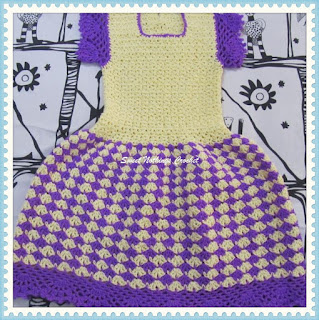



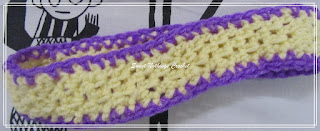




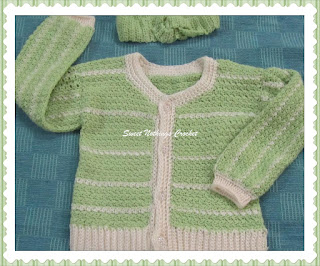



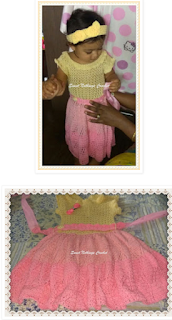












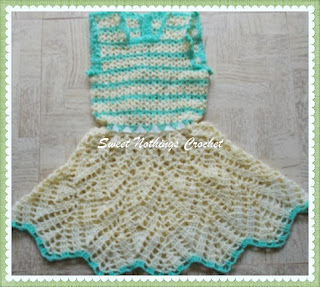




















No comments:
Post a Comment
Thanks for taking the time to stop by. Do tell me what you think. Cheers